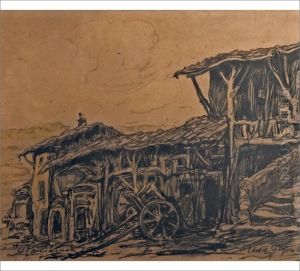Oskari Parviainen Paintings
Oskari Parviainen was a Finnish artist known for his contributions to painting and graphic design during the early 20th century. His work is less widely known than that of some of his contemporaries, and as such, there is less information readily available on his life and work compared to more prominent figures in the art world.
Born on December 13, 1887, in Juva, Finland, Parviainen's early life and educational background remain relatively obscure. However, it is known that he was active in the Finnish art scene during a time when national identity was a significant theme due to Finland's political climate. The country declared independence from Russia in 1917, and this period saw a flourishing of Finnish culture and a search for a unique Finnish identity in art and literature.
During his career, Parviainen produced works that were influenced by the Art Nouveau movement, which was popular across Europe at the turn of the century. This style, also known as Jugend in Finland, was characterized by elegant lines, floral motifs, and often a sense of romantic nationalism. Parviainen's work may have incorporated these elements, although specifics about his oeuvre are not widely documented.
Unfortunately, Oskari Parviainen's career was cut short by his untimely death on May 12, 1939. He died in Helsinki, Finland, leaving behind a body of work that contributes to the cultural tapestry of Finland's artistic heritage. The lack of extensive records and studies on Parviainen's life and art may be attributed to various factors, including the overshadowing fame of his contemporaries and the challenges in preserving and promoting the work of less prominent artists from that era.
Today, Oskari Parviainen's art may be found in Finnish museums and collections that specialize in early 20th-century Finnish art. His contributions remain a part of the study of Nordic art history, and his works are appreciated by those who seek to understand the breadth of Finnish artistic expression during a pivotal time in the nation's history.


